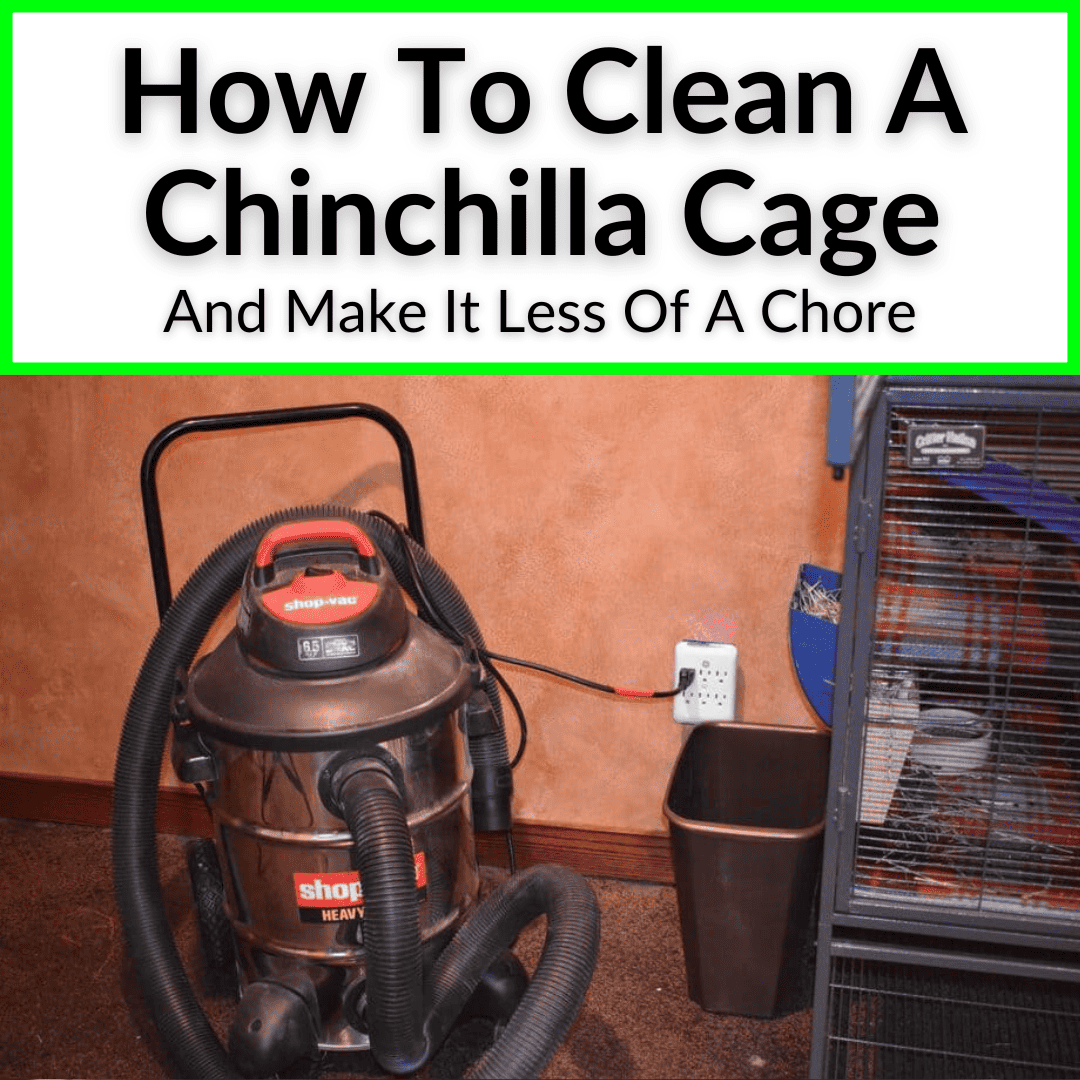
But there are two main tasks you need to perform for your pet.
Chinchillas need playtime outside the cage every day and they need a clean cage.
I will show you how to clean a chinchilla cage more efficiently.
That makes it a bit less of a chore, but it’s still a chore. And how often you have to clean the cage?
Every day. And also weekly.
There are two types of cleanings you need to perform: a quick daily cleaning and a deeply weekly cleaning.
Keep reading for a step by step guide to the deep weekly cleaning. Below that, we also have a checklist for the daily cleaning tasks.
Contents
How To Clean A Chinchilla Cage
The following step-by-step instruction show you how to clean a chinchilla cage thoroughly. As mentioned, you should do this type of cleaning once a week (or, at the very least, once every two weeks).
You also need to do a quick daily cleaning. We’ll show you what this entails further down.
Initial Preparations
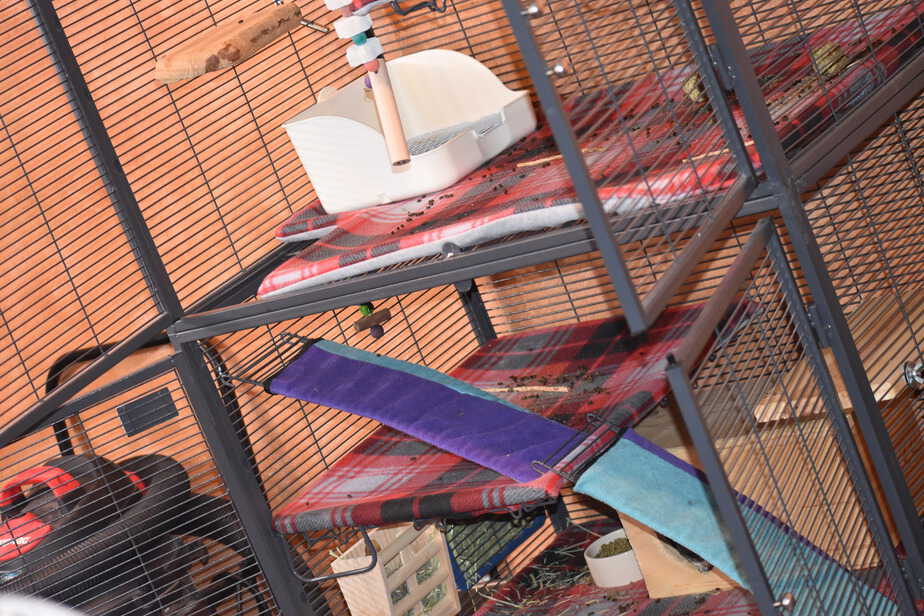
It really makes things a lot easier, if you get everything ready before you begin cleaning. Part of the preparation also involves removing your chinchilla and all of its accessories from the cage.
This can be a lot of work, if you have a large cage (as you should). The cage you see in the photo above is my favorite and the one I’ve been using, since I tested a bunch of cages for this article on the best chinchilla cages (where I ranked it my top choice).
Step 1: Gather Your Cleaning Materials
To ensure that you clean your chinchilla’s cage properly, you need to invest in some tools and supplies. Here are some materials we recommend for chinchilla cage cleaning.
- Cleaner: this can be a pet cage cleaner from a pet store; or regular dishwashing soap diluted with water mixed in an empty spray bottle; or a solution of distilled cleaning vinegar and water
- Wipes, sponges, and rags
- Old toothbrush or a metal scrub to scrub ground-in dirt
- Plastic bags to carry the discarded bedding and other waste
- Gloves, goggles, and coveralls for personal protection
Tips
- Always choose non-toxic cage cleaners only
- For your chinchilla’s safety, follow the instructions given on the product
- Only use recommended strength of the cleaners
- Never use full-strength bleach; it can be extremely harmful to chinchillas
- Protect yourself with goggles, gloves, and overalls, because chinchilla poop can carry diseases like giardia
Step 2: Move The Cage To An Easy-To-Access Area
Make sure you have ample room to move around the cage. If the weather permits, you can take the cage out in the yard or on the balcony for cleaning. If you need to wash the cage under running water, then use the bathroom.
Step 3: Relocate Your Chinchilla To Another Area
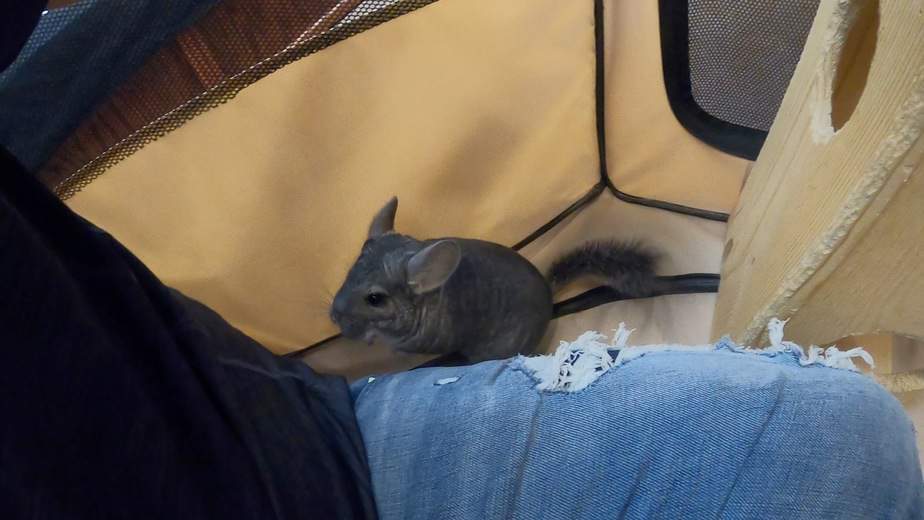
Temporarily place your chinchilla in another area for the duration of the cleaning. An enclosed playpen is ideal, or you can use a travel carrier or covered basket.
You’ll also want to remove all accessories in the cage. You’ll want to give these a good cleaning, too.
You can put some toys inside the enclosure or playpen to keep your pet occupied. And make sure it cannot escape! If it does escape, this article covers how to restrain a chinchilla. If possible, keep the cage and playpen in a location that allows you to still keep an eye on your pet while you clean.
Cleaning The Cage
Now we get to the fun (really?) part: the actual cleaning of the cage. Once you’ve done this a few times with aspen shavings or some other form of removable bedding, you’ll realize why I always recommend reusable fleece liners as my my preferred bedding option. It makes cleaning so much easier.
Step 1: Remove All Waste
If you have lined the chinchilla cage with a liner, such as newspaper or a mat, simply roll it up and replace it with a fresh one. If you use fleece liners, take them out and replace them with a fresh set (if you use two sets) or wash them and dry them.
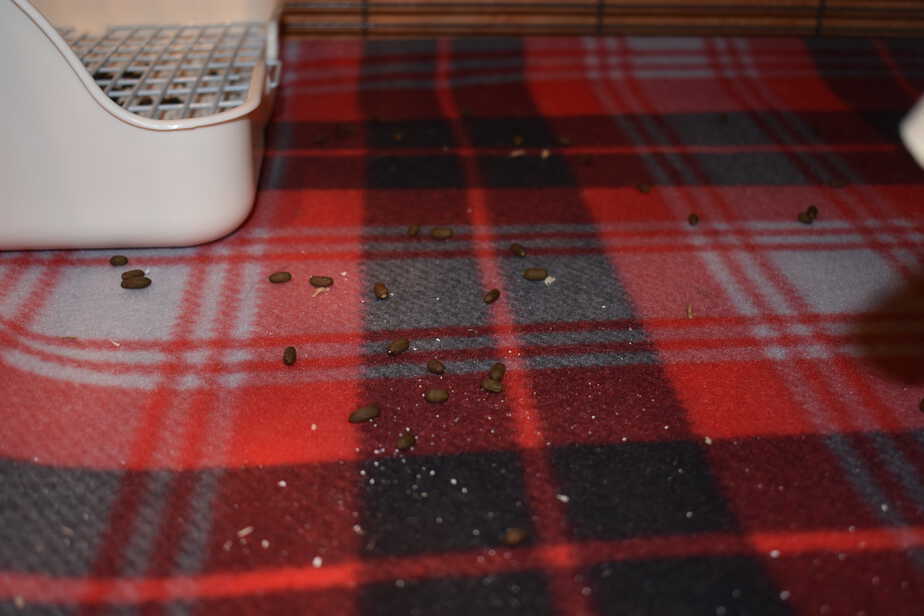
On the other hand, if you have added bedding, such as paper or wood pulp, remove the soiled stuff and add a layer of fresh bedding. You can compost some of the waste if it is biodegradable. If not, discard it properly in sealed plastic bags.
Step 2: Clean The Cage Completely
- If the cage comes apart, dismantle it. If needed, wash the entire cage in hot water, either by soaking it in a filled tub or placing it under running water.
- You can also spray each and every part of the wire cage with the cage cleaner product or diluted dishwashing soap or vinegar. Wipe down the entire cage with a clean rag after spraying.
- Use a toothbrush or metal scrub to scrub sticky messes or ground-in dirt.
- Remove all toys, chewing blocks, nesting boxes, wheels, tunnels, and other accessories and wash them under running water. Dry them completely.
- Scrub the food and water bowls. Dry them completely.
- If you use water bottles, wash them in hot water or the dishwasher.
Tips
- If the cage remains wet despite wiping it, let it air out. You can place it in the sun or near a window where the wind can dry it faster. Do not be in a hurry to refill a wet or damp cage, because that can invite mold.
- This is a good time to check your pet’s toys and chewing blocks for any hazards. Discard toys that are worn out or have developed small pieces or sharp edges.
Reassemble The Cage
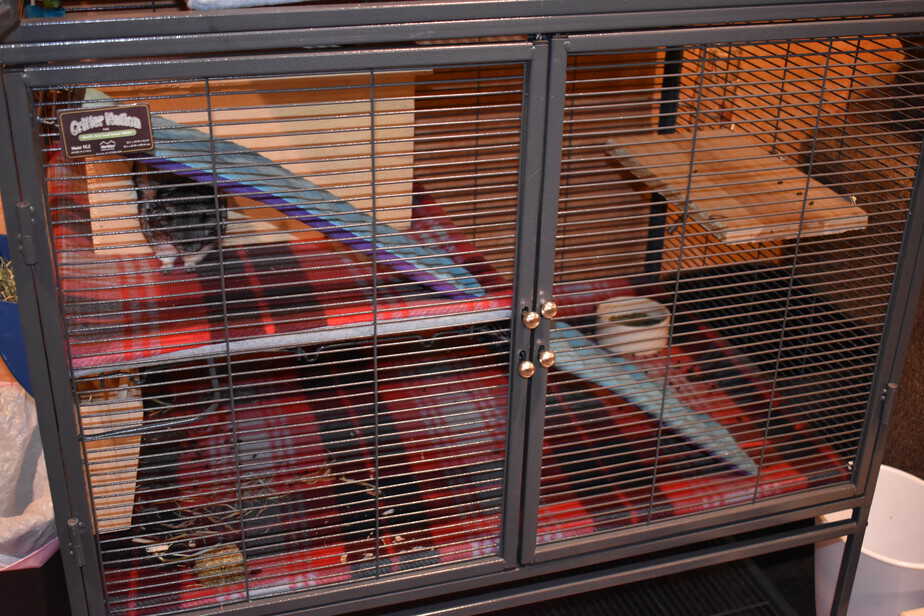
The hard part is over! Now you just need to wait for everything to dry, before putting it all back together. Then you can introduce your chinchilla to its shiny, new home!
Step 1: Set Up The Cage
Once the cage is completely dry, reassemble it. You should also replace the fleece lining and/or bedding. Make sure the bedding forms a nice, thick layer (at least 2-3 inches) for your chinchillas to dig and burrow in.
Add back the toys, wheels, nesting boxes, chewing blocks, tunnels, perches, accessories, and food and water bowls. Replenish the water in the bowls or bottles. Make sure the food and hay are fresh for your chinchilla.
Tips
- If you use water bottles, make sure they are not clogged and water flows easily.
- You can add new toys or rotate some older ones to mentally enrich your chinchillas.
Step 2: Let Your Chinchilla Back In
You can now let your chinchilla(s) back into the fresh, clean cage!
Step 3: Complete The Cleanup
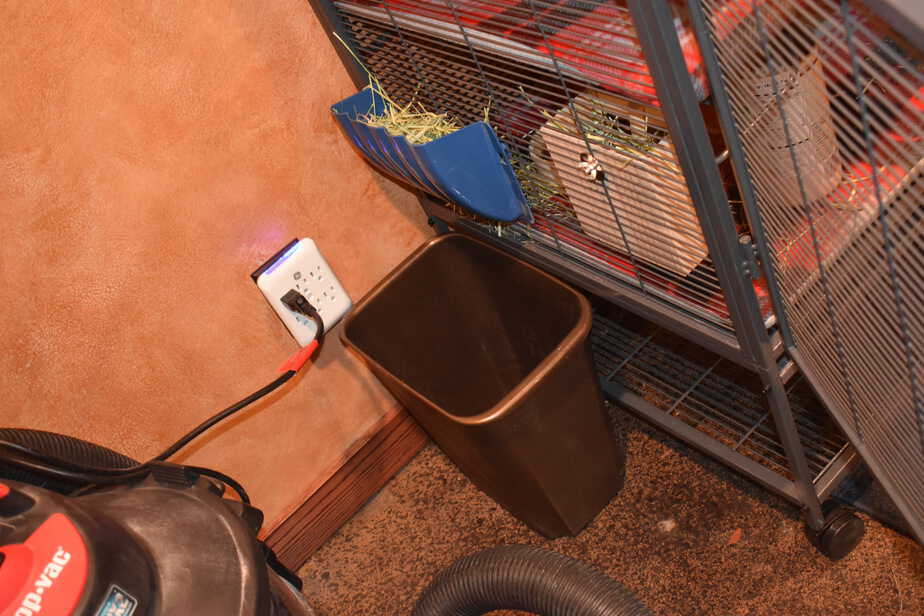
- Discard gloves, newspapers, lining, etc. safely.
- Tie up the bags you use for discarding all of the waste.
- If you used rags or sponges for cleaning, discard them or wash them in hot water before using them again.
- Wash your hands thoroughly after cleaning.
Daily Chinchilla Cage Cleaning Checklist
Daily cleaning is very important for your chinchilla’s health and well-being. Here are the cleaning steps you should perform every single day.
- Wash food and water bowls. Replenish with fresh food and water.
- Remove poop and any soiled bedding. If using fleece liners, you can simply vacuum up the poop. If any liners are soaked in urine, give it a quick wash (I potty trained my chinchilla to avoid this).
- Add fresh bedding or replace soiled liners.
- Clean up dirty toys, chewing blocks, and accessories.
- Scrub away any visible dirt in or on the cage.
Weekly Chinchilla Cage Cleaning Checklist
- Relocate your chinchilla(s) to a playpen or temporary enclosure.
- Remove all items from the cage. Wash and wipe them dry.
- Spray the cage with dishwashing soap/vinegar/cage cleaner solution. Wipe dry.
- Replace all items once the cage is dry.
- Replace your chinchilla(s).
How To Clean Chinchilla Cage: Related Questions
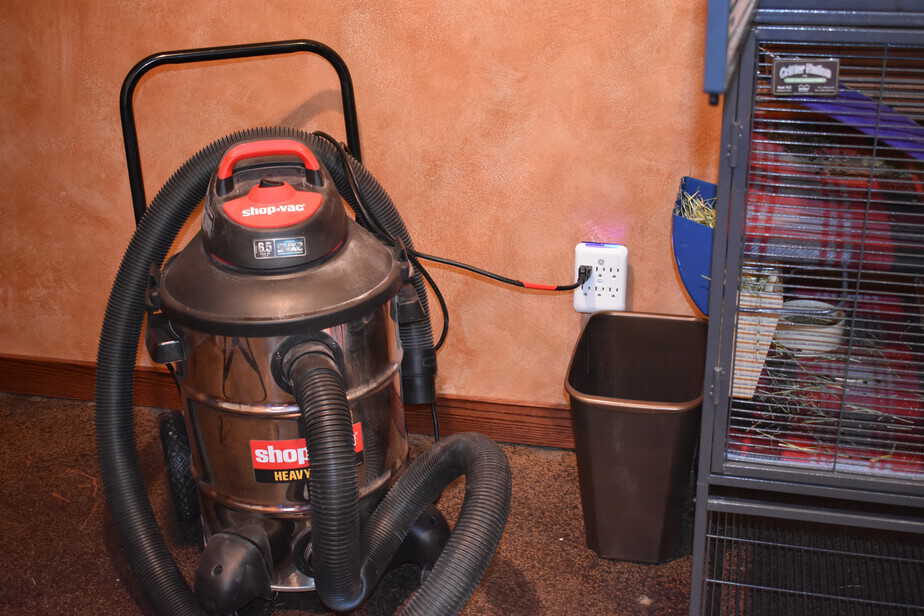
Next, I will answer a few common questions related to cleaning a chinchilla cage. If you have any additional questions, please feel free to ask them in the comments below.
How Messy Are Chinchillas?
Chinchillas are fairly messy, but less so than many other pets. They poop and pee a lot. You can potty train chinchillas to pee in a litter box, but not to poop there.
They tend to poop everywhere in their enclosures. But the poop is hard and dry, so you can simply vacuum it up, if you use fleece liners as bedding.
Chinchillas love dust baths and use them to keep themselves clean. However, dust baths can be quite messy for us to clean up. That is why I recommend letting your chinchilla bathe outside the cage (I do it in her playpen), where the dust is easier to clean up.
Do Chinchillas Like A Clean Cage?
Yes, chinchillas love a clean cage. Cleaning the cage regularly is essential for your pet’s physical and mental well-being.
Chinchillas tend to get extremely stressed if their cage is dirty. Stress can manifest in the form of aggression, excessive vocalization, ill-health, hair loss, etc. That is why you must spot clean your chin’s cage daily and deep-clean it at least once a week or once a fortnight.
How Often Should You Change Chinchilla Bedding?
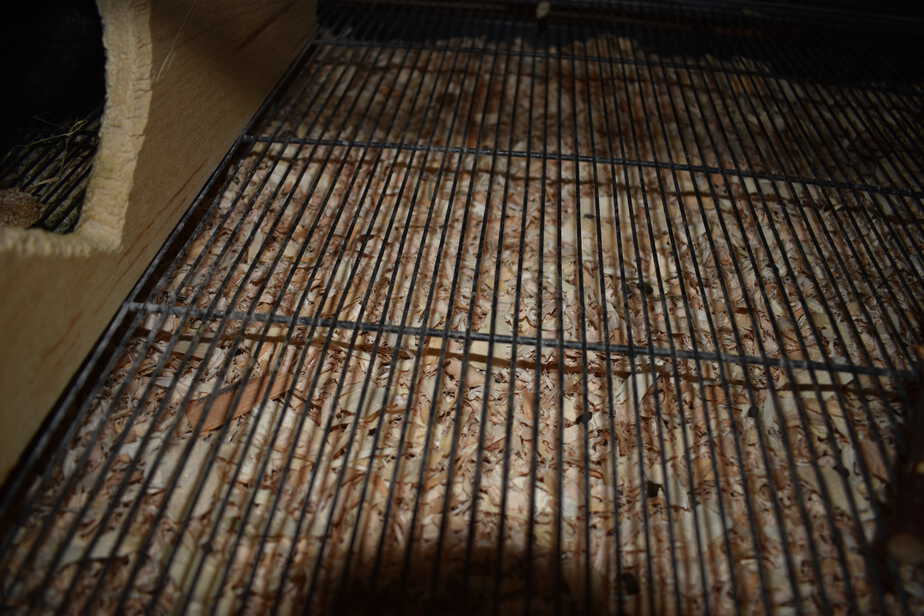
Ideally, you should change your chinchilla’s bedding completely once a week. I would remove any soiled bedding daily.
These days, there are many bedding products for small animals on the market that claim to remain fresh and odor-free for 14 days. However, these may be tall claims, and most small animal bedding products need to be replaced every 7 to 10 days.
Chinchilla Cage Cleaning: Final Thoughts
Cleaning your chinchilla’s cage is one of the two big time-consuming jobs you have as a chinchilla owner, the other being daily playtime. I enjoy playtime, so to me, cleaning is the only real chore I have when it comes to my chinchilla.
But if you know how to clean a chinchilla cage properly, and once you’ve done it a few times, you get pretty efficient at it and it takes much less time. You also learn little tricks to make it easier and faster. As mentioned, fleece liners changed the game for me, especially once I got my chin potty trained.
Leave a Reply